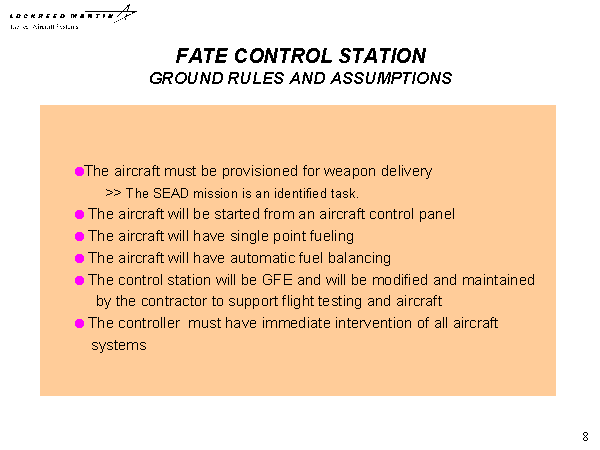Slide 8 of 28
Notes:
MORE GROUND RULES AND ASSUMPTIONS (Page 2)
The weapon delivery provision is a requirement received during the weekly teleconferences. This will put hardpoints and/or a weapons bay in the aircraft and the necessary hardware for weapon delivery. The SEAD requirement is assumed to mean that real time targeting will occur from this vehicle. This will drive some control station requirements. Starting the aircraft from a control panel relieves the control station from this task. The single point fueling and automatic fuel balancing means the control station will not need indicators or controls to perform this function. The GFE groundrule removes the cost of the control station from the contractor program cost. However, this will be provided to the vehicle operator as a program asset to modify and maintain as necessary in support of flight test and vehicle mods that impact the control station. The immediate intervention requirement was another requirement that was received during the weekly teleconferences. This drives control station requirements to provide a means for the controller to easily and immediately (without going through a bunch of steps) send directions to the vehicle. It is assumed that this is to avoid possible loss of vehicle situations. Consequently, three layers of vehicle control were devised. Program control, indirect control and direct control. Program control is via stored instructions in a flight plan on the vehicle(and in the control station). The initial plan can be modified in flight and is what is referred to as the current plan. Indirect control is exercised by the operator via high level commands such as turn left, go up, hold, return to base, fly-up etc. Direct control is via a stick and throttle to “hand fly” the vehicle.















